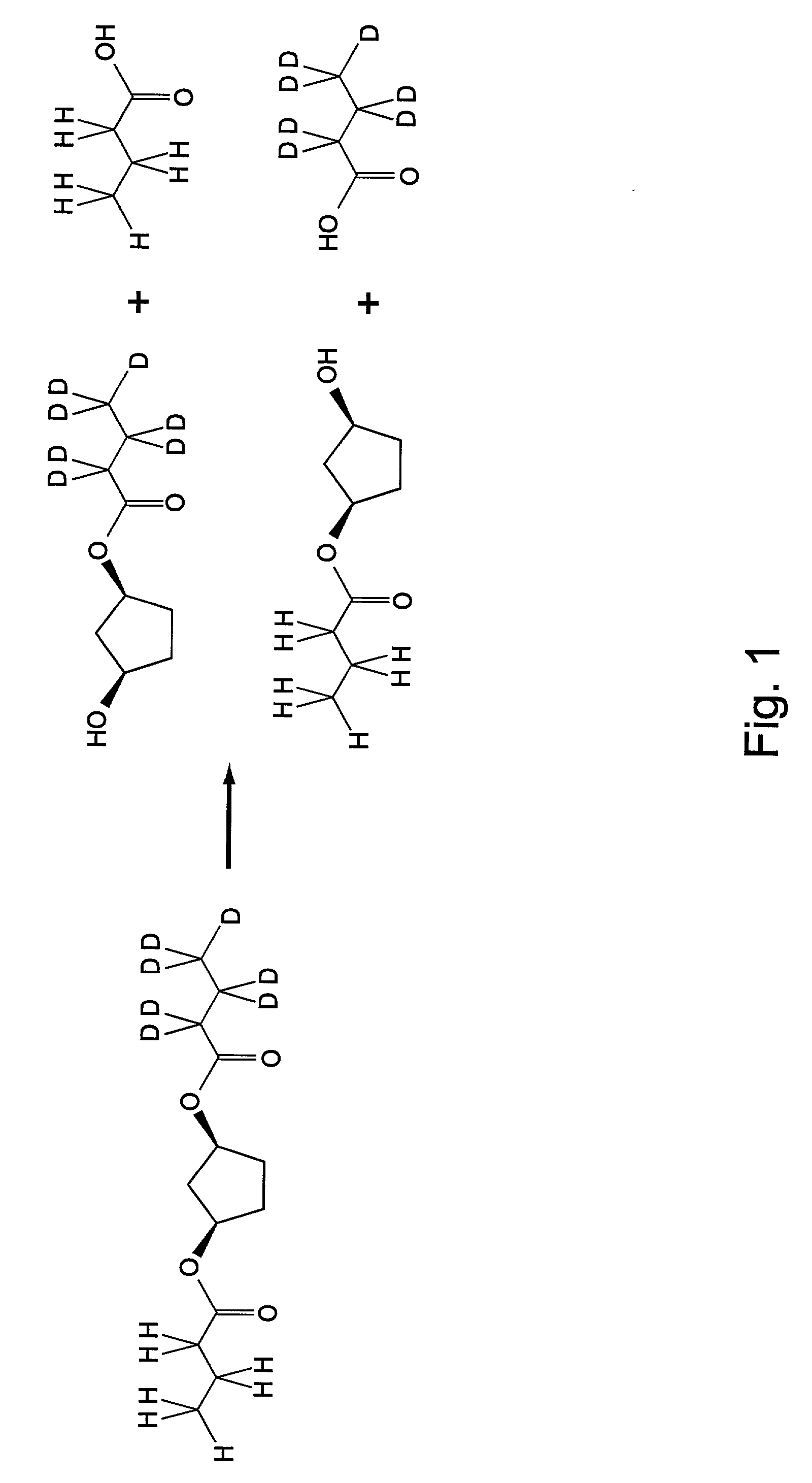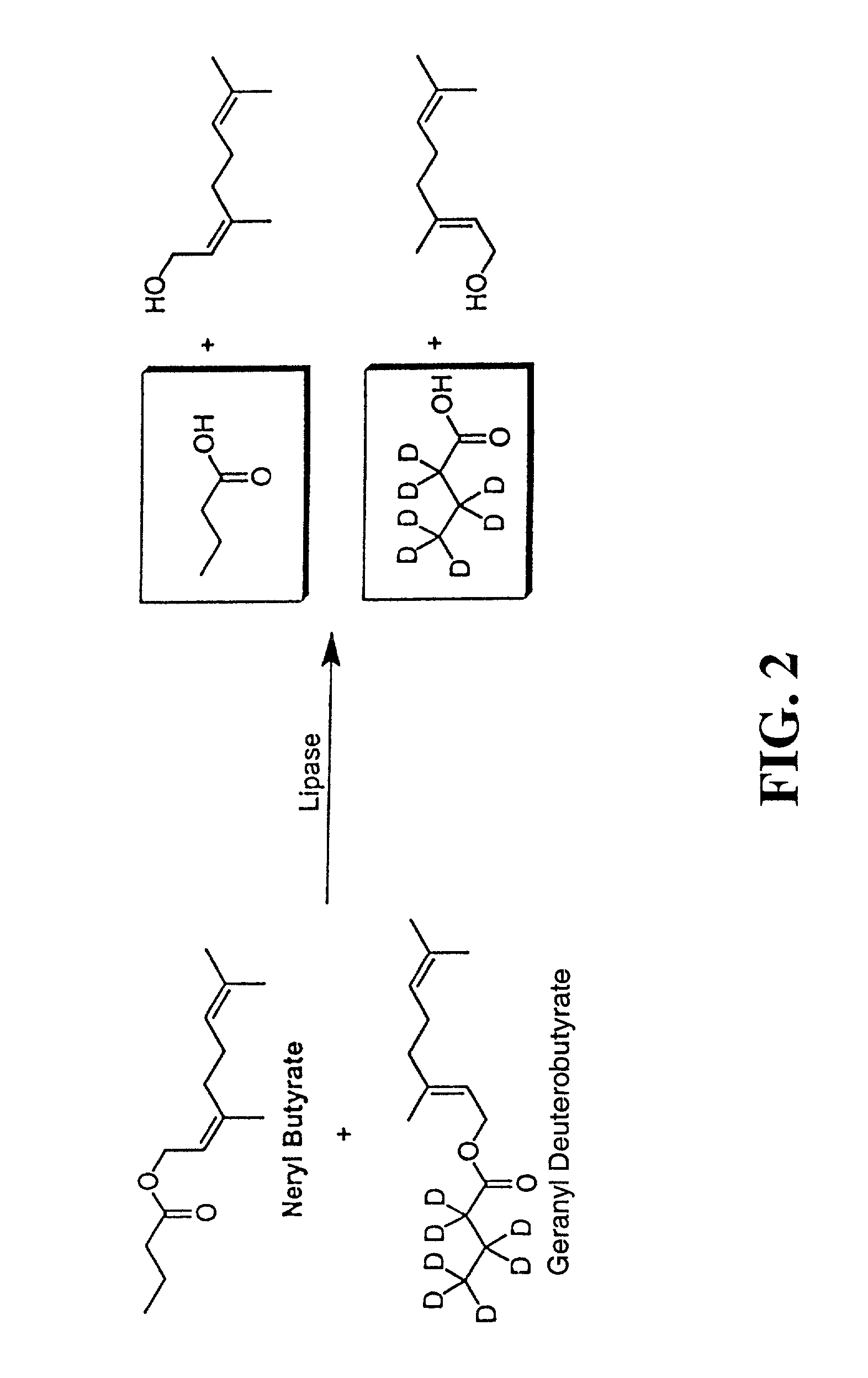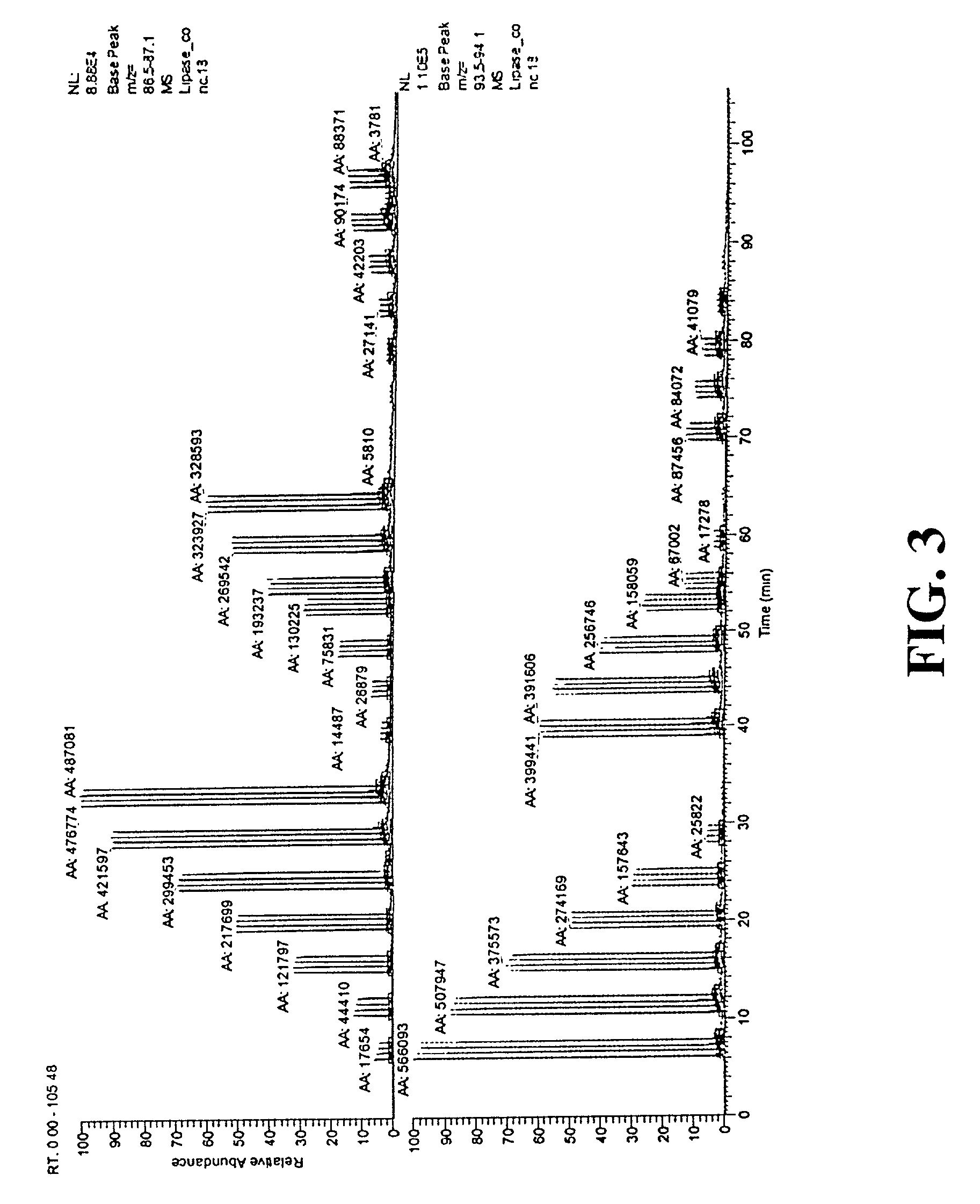Screening for enzyme stereoselectivity utilizing mass spectrometry
- Summary
- Abstract
- Description
- Claims
- Application Information
AI Technical Summary
Benefits of technology
Problems solved by technology
Method used
Image
Examples
example
[0136] I. Substrate Synthesis
[0137] All materials were purchased from Sigma or Aldrich unless noted. Nerol butyrate was prepared by from nerol and butyryl chloride in methylene chloride / pyridine. Geranyl deuterobutyrate was prepared from geraniol and deuterobutyric acid (Isotec) using DCC coupling in methylene chloride. Both compounds were purified by flash chromatography (ether / hexanes) and gave satisfactory analysis by mass spectrometry and NMR.
[0138] II. Library Pre-Selection and Enzyme Preparation
[0139] An artificially evolved lipase library was prepared by shuffling, using methods described in WO 97 / 20078. Transformants were robotically picked to 386-well microtiter plates containing 70 .mu.L growth medium (2.times. YT, 0.5% glucose to suppress induction, 30 .mu.g / ml chloramphenicol) and grown 12-20 hours at 37.degree. C., 300-rpm shaking speed in a Kuhner incubator. The cultures were then gridded via a Q-bot robot (Genetix, UK) to inducing agar (2.times. YT, 1.5% agar, 1 mM IP...
PUM
 Login to View More
Login to View More Abstract
Description
Claims
Application Information
 Login to View More
Login to View More - R&D
- Intellectual Property
- Life Sciences
- Materials
- Tech Scout
- Unparalleled Data Quality
- Higher Quality Content
- 60% Fewer Hallucinations
Browse by: Latest US Patents, China's latest patents, Technical Efficacy Thesaurus, Application Domain, Technology Topic, Popular Technical Reports.
© 2025 PatSnap. All rights reserved.Legal|Privacy policy|Modern Slavery Act Transparency Statement|Sitemap|About US| Contact US: help@patsnap.com



